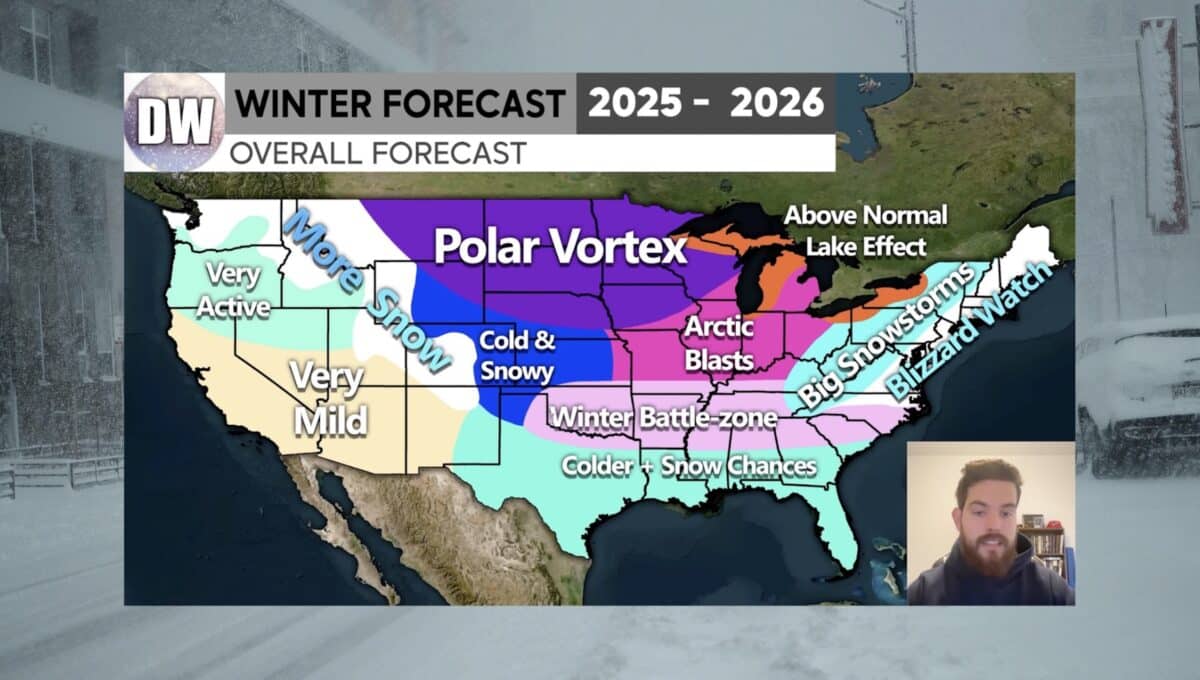Direct Weather has released their final winter forecast for 2025-2026, taking a look at the latest data and confirming a weak La Niña pattern that will shape conditions across the United States. The forecast predicts a dramatic split between regions, with significant implications for temperature, precipitation, and snowfall patterns.
Temperature Outlook: Regional Extremes
The Southwest will likely experience the most pronounced warmth, with above-average temperatures expected across California, Nevada, southwestern Utah, Arizona, and parts of New Mexico. This warmth is most expected along the southwestern coast, particularly California and southwestern Arizona.
On the other hand, a massive cold pattern will dominate east of the Rockies. Direct Weather’s forecast shows exceptional confidence in below-normal temperatures for the Midwest, Great Lakes, Ohio Valley, and interior Northeast. The Northwest presents an interesting shift, with Washington now expected to see below-normal temperatures due to increased storminess and cloud cover.
Precipitation and Snowfall: Active North, Dry South
Storm systems are expected to be driven south through the Northwest by the weak La Niña pattern before they linger across northern states. The Northwest, Northern Plains, Midwest, Ohio Valley, Great Lakes, and interior Northeast face above-average precipitation and snowfall potential.
The Southwest however will remain notably dry, with California, Nevada, and Arizona seeing well-below-average precipitation as storms bypass the region.
Key Winter Forecast Highlights
- Polar Vortex: Early indicators point to a polar vortex split in late November, potentially bringing severe cold by early-to-mid December.
- Lake Effect: Record-warm Great Lakes waters combined with Arctic air should produce above-normal lake-effect snowfall.
- Deep South Snow: The Gulf States and interior Carolinas may see unusually far-south snow events.
- East Coast Blizzards: Major troughs could produce significant nor’easters and potential blizzards along the Mid-Atlantic and New England coasts

